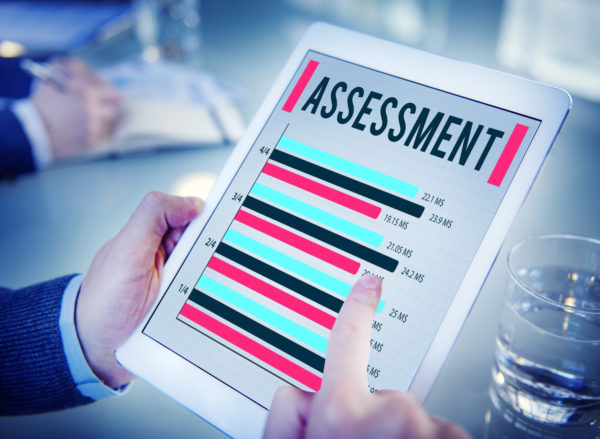Educators at all levels agree on the need to assess what their students know, but a growing number of them find that tests are not the best way to do it.
This trio of educators has found innovative ways to empower their students to show what they know.
Assessments as Progress Monitoring
Linda Baker, K-4 literacy specialist
Traditional tests are not always the best indicators of our students’ success because many of them are reluctant readers to begin with, so we can’t always rely on a measure on any particular day. We don’t know what’s happening at home. We don’t know how they’re feeling. There are a lot of factors that need to be taken into account when we do all our screenings.
We do a lot of progress-monitoring for each skill that we teach. Every week our students learn a different skill, and every Friday we progress-monitor to see how the skill is being used—for example, can they properly read the words we have assigned?
We also monitor the data we get from Reading Horizons, the computer-based program we use for our literacy teaching, to see what needs to be taught longer and what students have mastered. We then make our student groups accordingly. There’s a lot of flexibility, with students moving from group to group as they master various skills.
We see our students and use Reading Horizons on a daily basis, so if a student doesn’t seem to be doing his or her best work, we continue to monitor that student on a daily basis and adjust accordingly.
(Next page: 2 more ways of assessing without testing)
Assessments for Meeting District-Wide Goals
Chris Marczak, Ed.D., superintendent
In the Maury County Public Schools (MCPS) system, we have moved beyond relying on the traditional state end-of-year tests to determine our classification of being a “good” or “poor” system. We engaged our community over a 10-week process, to tell us what they want us to be doing for all students. We took 9,327 statements and we used them to develop seven key objectives: the MCPS Keys to College and Career Readiness.
To determine our effectiveness with the Seven Keys, we have district- and school-based scorecards that track the progress of all students towards meeting the Keys. Teachers and principals are in charge of implementing school-based initiatives that push the growth on their scorecards, which, in the end, ultimately affect the overall district scorecard. We are using myON as a measure to determine true student growth towards three different Keys:
- Key 1: All students reading at grade level by the end of 3rdgrade;
- Key 3: All students’ math and English proficiency at or above grade level by the end of 6thgrade; and
- Key 5: All students scoring at or above ACT College Readiness Benchmarks by graduation.
Through the built-in data tools, we are able to track students’ reading time, the book levels that they are choosing, which impacts their Lexile levels, and the Lexile assessments that truly measure reading by reading, not based on how many questions a student can answer right on a standardized assessment.
Two of the challenges that we have experienced are meeting the needs of advanced readers and getting more student access to the program. As we progress, we are purchasing more complex level texts for our advanced readers. We are also deploying a digital initiative program called DIPLOMA (Digital Integration Plan for Learning on Mobile and Accessibility) that will see students in grades 3–12 receive district-purchased laptops that they will take back and forth between home and school. DIPLOMA is being used to support our district-wide shift to projects/problem-based learning, and will also give more students 24/7 access to the materials they need to achieve all seven Keys.
Assessments as Digital Portfolios
Jude Miqueli, 1st-3rd-grade teacher
To assess students’ progress without testing, I help them create a digital portfolio of their accomplishments. I post instances of positive behavior, work samples, notes on moments of teamwork, and books they’ve read. The Bloomz app automatically includes the date with my posts. I also upload videos, which give parents and teachers examples of performance -based assessments.
When all of these things are compiled into student portfolios, it creates a year-long documentation of their work. In my case, I will see three years of progress, since my students are with me from first to third grade. I check the digital portfolio as the year goes on to assess reading, writing, computation, and fine-motor skills based on the work samples I post.
My goal is to upload a literacy, math, and art work for each student each month. Using a phone to take quick pictures throughout the day speeds up the process. I upload the pictures to Bloomz from my phone. I like the digital portfolio because parents view it as you create it, and it’s easy to scroll back to see progress.
This type of formative assessment is a better indicator of learning than traditional testing because it omits “test anxiety.” Sometimes the students don’t even know they are being assessed. When they do know, they are excited about it because they are involved. They ask me to post certain pieces of work in their portfolio when they self-assess and are proud of their progress.
When I see reading comprehension within their writing or watch a video of a student giving an oral presentation, I assess literacy without the student stressing out over bubbling in the correct letter. Compiling student-developed artifacts on a digital timeline offers an alternative method of assessing that eliminates the anxiety of finishing a test in time.
- 4 ways to encourage play in education - April 25, 2024
- It’s time to pay student teachers - April 25, 2024
- The evolving requirements of a K-12 school network - April 24, 2024

